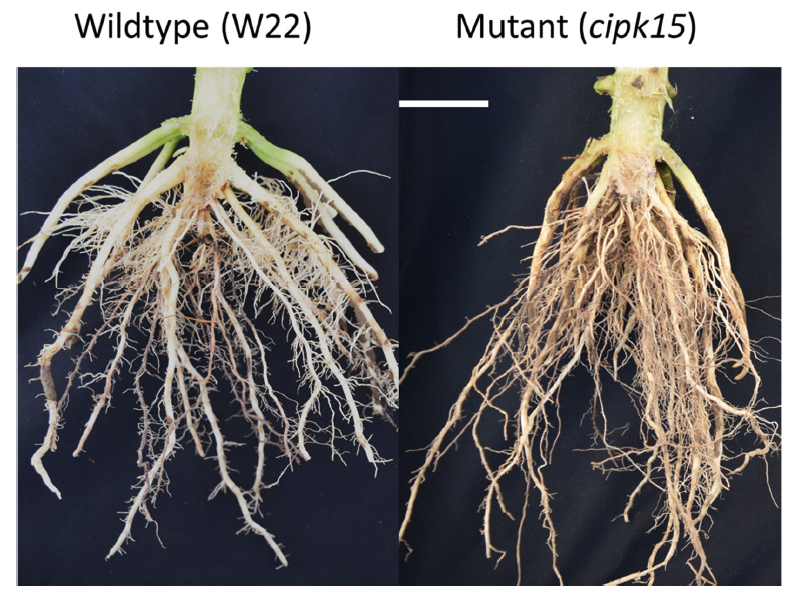
Root Angles in Maize
Authors
Schneider HM, Vai Sa Nee Lor, MT Hanlon, A Perkins, SM Kaeppler, R Bhosale, AN Borkar, X Zhang, J Riodriguez, A Bucksch, MJ Bennett, KM Brown, JP Lynch
Source
Plant, Cell & Environment 45:837-853 http://doi.org/10.1111/pce.14135
Download Options
Open access from PCE
Abstract
Crops with reduced nutrient and water requirements are urgently needed in global agriculture. Root growth angle plays an important role in nutrient and water acquisition. A maize diversity panel of 481 genotypes was screened for variation in root angle employing a high-throughput field phenotyping platform. Genome-wide association mapping identified several single nucleotide polymorphisms (SNPs) associated with root angle, including one located in the root expressed CBL-interacting serine/threonine-protein kinase 15 (ZmCIPK15) gene (LOC100285495). Reverse genetic studies validated the functional importance of ZmCIPK15, causing a ~10° change in root angle in specific nodal positions. A steeper root growth angle improved nitrogen capture in silico and in the field. OpenSimRoot simulations predict at 40 days of growth that this change in angle would improve nitrogen uptake by 11% and plant biomass by 4% in low nitrogen conditions. In field studies under suboptimal N availability, the cipk15 mutant with steeper growth angles had 18% greater shoot biomass and 29% greater shoot nitrogen accumulation compared to the wildtype after 70 days of growth. We propose that a steeper root growth angle modulated by ZmCIPK15 will facilitate efforts to develop new crop varieties with optimal root architecture for improved performance under edaphic stress.

